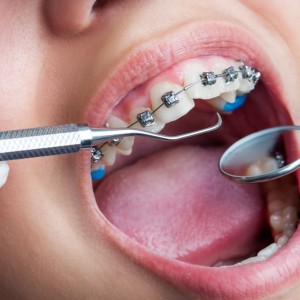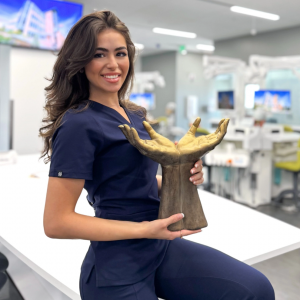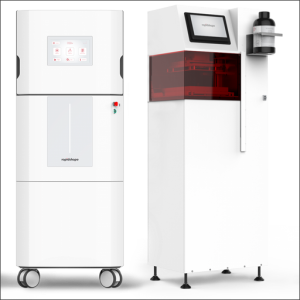
To splint or not to split short dental implants under the same partial fixed prosthesis? One-year post-loading data from a multicentre randomised controlled trial
Marco Tallarico, Fulvio Gatti, Mario Silvio Meloni, Leonardo Muzzi, Nicola Baldini, Jacopo Buti, Armando Minciarelli, Ertha Xhanari, Marco Esposito
Purpose. To compare the clinical outcomes of two adjacent 6-mm-long dental implants splinted under the same prosthesis (control group) versus two identical implants supporting single crowns (test group).
Materials and methods. Forty-seven patients with edentulous posterior (premolars and/or molars) jaws received two adjacent 6-mm-long dental implants, which were submerged. Four months later, at impression taking, patients were randomised to receive splinted or unsplinted definitive cemented metal-composite prostheses. Unfortunately, four patients died before randomisation and three patients lost five implants, so only 40 patients were randomised, according to a parallel-group design, to have both implants splinted under the same partial fixed prosthesis (19 patients) or with two single crowns (21 patients). Outcome measures were: prosthesis and implant failures, any complications, peri-implant marginal bone level changes and patient satisfaction. Patients were followed-up to 1 year after loading.
Results. One patient from the splinted group dropped out. No implant failures occurred after randomisation. One complication occurred in the unsplinted group versus no complications at splinted implants, the difference not being statistically different (Fisher’s exact test P = 1.000; difference in proportions = -0.04; 95% CI -0.16, 0.09). Both groups presented significant peri-implant marginal bone loss at 1 year after loading (P<0.05), respectively -0.36 (0.45) mm at splinted implants and -0.17 (0.31) mm at unsplinted implants, but there were no statistically significant differences between the two groups (mean difference 0.19 mm; 95% CI -0.10 to 0.48; P = 0.194). All patients were fully or reasonably satisfied with the treatment, with the exception of two patients, both from the splinted group: one patient was not sure about the aesthetics, and another would not undergo the same treatment again.
Conclusion. The present data seems to suggest that up to 1 year after loading the prognosis of short implants, mostly placed in mandibles characterised by dense bone quality, may not be influenced by splinting or not under the same fixed prostheses. However, these preliminary results need to be confirmed by larger trials with follow-ups of at least 5 years.
 Read more
Read more
Orthodontics 28 October 2025
The relationship between odontogenic bacteraemia and orthodontic treatment procedures
The purpose of this research was to estimate the prevalence and intensity of bacteraemia associated with orthodontic treatment procedures.
Editorials 28 October 2025
Third Annual Haptics Competition Puts Students’ Dental Skills to the Test
Diana Torosyan (DDS ’28) takes home top honors in competition that expanded for the first time to include University of North Carolina dental students.
Dentsply Sirona, the world’s largest diversified manufacturer of professional dental products and technologies, and Rapid Shape, a leading innovator in German-engineered dental 3D printing...
News 28 October 2025
BIOLASE, the global leader in dental laser technology, will present a major advancement in periodontal care during the American Academy of Periodontology (AAP) 2025 Corporate Forum in Toronto,...
News 28 October 2025
From advancing the specialty of office-based anesthesia through the medical/dental fields as a whole, ranging from procedures to technologies being implemented now and in the future, Office...










